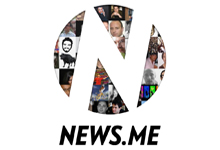Personalized news app Zite made headlines last week for a minor skirmish with a group of major publishers, but the personalized aggregation app expected to make news any day now is Betawork’s News.me.
 News.me, which has been in beta for a few months, is expected in the iTunes Store very soon. Flipboard, Pulse and the more recent Zite are popular on the iPad, but no one has yet cornered the market for a tablet-focused, personalized news aggregator. So the question is: What will News.me need to do to grab an audience?
News.me, which has been in beta for a few months, is expected in the iTunes Store very soon. Flipboard, Pulse and the more recent Zite are popular on the iPad, but no one has yet cornered the market for a tablet-focused, personalized news aggregator. So the question is: What will News.me need to do to grab an audience?
I have not had advance access to the app, but after reading up on it and using many of its competitors, I’ll be looking for these six features when I download News.me from the iTunes store.
The personalization must be low maintenance.
If a tool is meant to effortlessly filter and personalize your news, the setup has to be equally effortless.
Zite handles this well. The app simply asks you to connect your Google Reader and Twitter accounts. Additional preferences can be indicated (optionally) on a per-article basis as you browse within the app.
For many readers, this is as much work as they wish to do.
Trove (which plans to develop an iPad app) learns users’ interests by asking them to pick between two stories on different topics. A recent pairing offered me a choice between articles about Justin Timberlake or Bob Woodward. That feels like work to me, and every time I visit the site there are a dozen or more votes to be cast.
According to early reviews of News.me, the setup could not be easier. The app simply connects to your Twitter account. Instead of showing you news links tweeted by your friends, it features the links recommended by their friends. This greatly expands the pool of available sources. If I follow 100 people on Twitter, and each of them follows 100 different users, I would have access to recommendations from 10,000 different sources.
Though I’m not sure how effective that approach will be in surfacing relevant news, it does seem effortless.
The design must be tablet-friendly.
Flipboard has set the standard here. It features a simple grid of stories dominated by photos and headlines. CEO Mike McCue told me in an interview last month that the magazine-like design, a reaction to the cluttering of the Web, is key to its success.
Due to its popularity, every similar news app to follow will be judged against Flipboard. Some mainstream apps — NPR, CNN and The Huffington Post — have adopted the grid format as a core UI element. Ongo, which is supported by The New York Times, The Washington Post and USA Today (among others), has a more traditional print-like interface with five or six headlines, photos and short excerpts per section front page.
But for any news app, the tablet should be as different from a Web page as the Web is from print — not for novelty’s sake, but because a touchscreen requires a radically different approach than one intended for a mouse and keyboard.
News.me has taken a middle road in its basic design. The screenshots I have seen so far reveal three stories per page, laid out in broad rows with a headline and large photo. Tech publisher Tim O’Reilly tweeted in late February that he liked the look.
Publishers must be able to profit.
Last week, 11 publishers, from Dow Jones to Time, sent Zite a cease-and-desist letter for what the news organizations termed pervasive copyright violations.
The issue is that Zite takes publishers’ Web content and reformats it for easy, ad-free reading. Zite has always stated its willingness to present news content in its original Web format within the app. (And it does so for any publisher who asks.) But for Zite, an easy-to-read presentation or not, simply personalizing news is not an actual business model.
Flippboard has a eight-month head start on developing a business plan and is aggressively pursuing an advertising revenue sharing strategy via its Flipboard Pages feature. Zite also plans to offer advertising in partnership with media outlets.
The profitability challenge is that a customer’s interest in ubiquitous access to unlimited sources of information in a convenient package can conflict with a publisher’s ability to monetize that content.
A publisher-built product like Trove or Ongo is likely to feel that conflict acutely. An independent developer, such as Flipboard or Zite, less so. News.me is in a slightly different situation, as the product was originally developed in The New York Times R&D lab and then taken over by the team at BetaWorks. It remains to be seen how it will deal with publishers’ interests if they conflict with consumer needs.
I wrote last week that one solution for this challenge would be to create a standard API that enables content and revenue sharing between content creators and app developers.
News must be up-to-the-minute current.
When I reviewed Trove’s private beta test in February, it did not feel like a timely news source. The site is still in development, so that might change, but it is a challenge any news product faces.
Trove presents me with many recent headlines, but a quick check of my homepage reveals the 2012 Olympics and Bill Clinton as the two top stories. Both may be relevant and interesting to me, but neither feel like top news. The effect is that Trove seems more like a weekly news magazine than a daily newspaper.
This is going to be a problem for any service that filters news from your social networks. Your news feed is going to be more or less dependent on the quality and speed of your friends.
News changes quickly, and what is relevant now may be outdated in an hour. Depending on the original sources that are indexed and the relevance algorithms, personalization and timeliness may not always mix.
To supplement its recommendation engine, Trove provides a section of timely “editor’s picks,” which helps.
Zite is relying not just on friends, but friends-of-friends as the core of its news filter. It will then apply some measure of urgency to stories based on traffic it senses from the bit.ly URL shortener. More traffic to a story indicates that it has more immediate importance.
Sources must be comprehensive, diverse.
This is the challenge of every traditional single-source news app, as well as those like Ongo with a limited number of sources: Even though publishers long for tablets to recreate a print paradigm of information scarcity, consumers do not.
For readers, the point of an aggregation app is that it filters, edits and prioritizes the vast amount of content available on the Web.
But an aggregator that includes only a limited number of sources loses a significant amount of value. Consider Google. How useful would the search engine be if it only indexed the top 100 sites on the Internet?
An aggregator must have a similarly broad scope to be useful. Forcing readers to use other apps for news you’re missing reduces the usefulness of your app as a source.
Reccommendations must be relevant, not random.
A successful aggregation service can be measured in the number of clicks it generates.
The magic behind the “perfect” recommendation service will include a balance of self-selected interests, recommendations from your social network, and aggregated suggestions from the Internet population at large.
That is no easy task. Last year Jeff Jarvis noted that serendipity is not randomness, but rather “unexpected relevance.” He wrote that newspapers do this every day, presenting stories you do not realize you are interested in until you read them.
“Can an algorithm serve us serendipity? Maybe, if it has enough signals of what we and people we trust like, what interests us, what we need, our context.”
The first company to capture those signals, index content from a large enough collection of sources, and figure out how to reward content creators for their efforts will be the Google or Facebook of the next generation of the digital news economy. We’ll know soon whether that might be News.me.







Comments